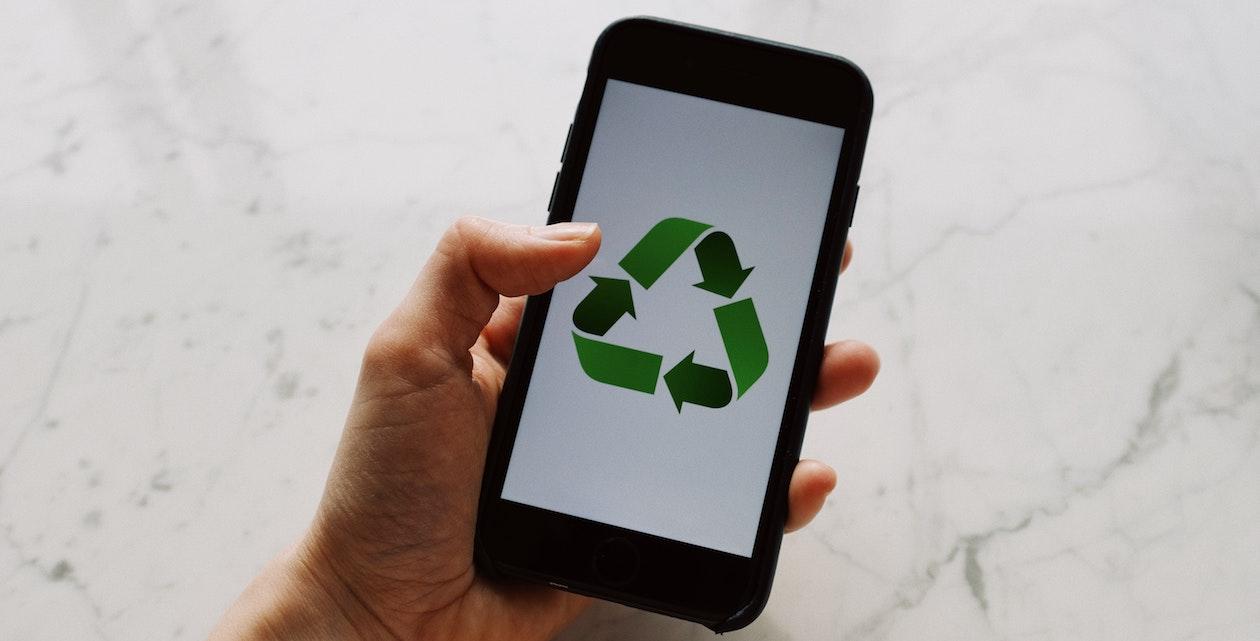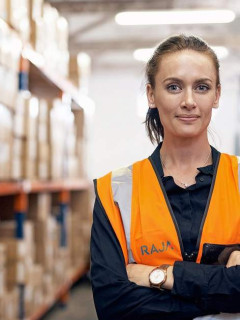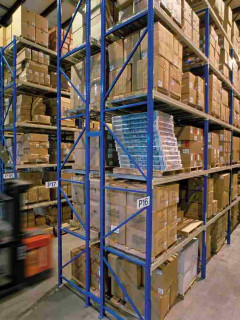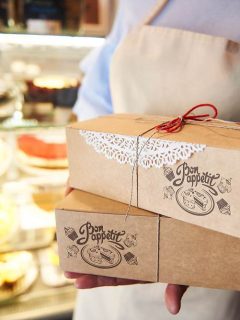Recyclable packaging, or more generally eco-responsible packaging, is more topical than ever: the year 2020 will have marked a significant turning point from an ecological point of view: consumers are more aware than ever of the impact of their practices on the planet, and companies are following suit.
It is in this context that it is interesting for you, as a logistics manager, to learn more about the eco-responsible criteria and labels that you can put on your packaging. Discover them here, as well as some good practices to make the most of them in your packaging strategy.

Why should you care about eco-labels and criteria for packaging?
Eco-responsible packaging criteria and labels have a major role to play in the experience you offer to your customers, in your brand image, and for your employees. Here are 4 good reasons to take an interest in them when choosing recyclable, reusable, biobased… or more globally eco-responsible packaging.

To meet your customers’ expectations
According to an IFOP study from February 2020, no less than 44% of French people consider that it is the responsibility of companies to act effectively towards the environment.
Beyond this study, you only need to go on social networks to understand consumers’ expectations from an environmental point of view: plastic bashing publications, which denounce the use of non-recyclable materials, or posts complaining about the over-packaging of products received, are legion.
In short, consumers (and therefore your customers) are becoming more and more aware of the environmental impact of their daily practices. If they want to buy products that have less impact on the planet, they also want to receive them in packaging that will not harm the environment.
In this sense, taking an interest in the criteria and labels of recyclable packaging means taking into account your customers’ expectations and showing them that you share their convictions.
To differentiate your brand
If you’re interested in green logistics issues, you’ve probably already seen this figure: according to a 2020 Tonula study for Two Sides, 44% of consumers would be willing to spend more on a product packaged with sustainable materials.
As a result, displaying eco-friendly criteria or labels on your packaging is a significant way to differentiate and enhance your customer experience. These elements, along with a well-crafted graphic design or a meaningful logo, help you to highlight your added value and make your brand stand out to consumers.
To guide your customers towards environmentally friendly practices
An interestingProCarton study recently revealed that 52% of European shoppers are looking for products that are packaged in environmentally friendly packaging, but it may be difficult for your customers to notice that a simple package is actually planet-friendly.
Indeed, if consumers are sensitive to recyclable packaging (or more globally “green”), they do not necessarily know at a glance how to differentiate an eco-responsible material from a non-recyclable one. The study mentioned above proves it: only 9% of European consumers consider that plastic is a form of ecological packaging… even though there are many recycled, biosourced or recyclable plastics today!
Thus, including eco-responsible criteria and labels on your packaging is a visual explanation, in the blink of an eye, to your customers that they are dealing with eco-responsible packaging. Similarly, certain logos, as you will see, help guide your customers in terms of recycling, by indicating where your packaging should be deposited and collected, in the logic of selective sorting.
To help your employees apply good eco-responsible practices
As you know, your employees, and in particular the operators working in your warehouse, also need to be trained in good eco-responsible practices so that your logistics reflect your environmental convictions.
In this sense, looking at the criteria and labels of eco-responsible packaging gives your employees the opportunity to understand and apply selective sorting to the letter. If a package is damaged during the packaging phase, your operator automatically knows, thanks to the logos on it, where it should be recycled.
Criteria and labels for recyclable packaging to know
Did you know that the Mobius loop, which indicates that a package is recyclable, is the most recognised logo in Europe (by 86% of respondents to the Tonula survey for Two Sides) and is also considered the most important marking for consumers.
However, as the person responsible for your packaging, it is important that you know that this famous loop can represent several labels:
 this logo indicates to consumers that the packaging can be disposed of in a yellow bin anywhere in France.
this logo indicates to consumers that the packaging can be disposed of in a yellow bin anywhere in France.
 When a percentage number is added to it, the Mobius loop indicates that the product is made from recycled materials, and how much recycled material is in it.
When a percentage number is added to it, the Mobius loop indicates that the product is made from recycled materials, and how much recycled material is in it.

This “RESY” symbol is for products made from recyclable cardboard, and is issued by a German organisation.
Other eco-responsible criteria and labels to discover
In addition to the famous Möbius loop, other logos and labels can help your customers identify that your packaging is environmentally friendly.
This is the case for those that refer to theeco-design of the packaging:
 The EU Ecolabel certifies that the product as a whole has a lower impact on the environment, from its production to its end of life.
The EU Ecolabel certifies that the product as a whole has a lower impact on the environment, from its production to its end of life.
 The “NF Environnement” mark is derived from a French ecolabel, which certifies that the product has a lesser impact on the environment, with a suitability for use at least equivalent to that of other similar products. It can be found on products intended for consumers, and on intermediate products.
The “NF Environnement” mark is derived from a French ecolabel, which certifies that the product has a lesser impact on the environment, with a suitability for use at least equivalent to that of other similar products. It can be found on products intended for consumers, and on intermediate products.
There are other, lesser-known logos that can help you choose environmentally responsible packaging:
 The Forest Stewardship Council (FSC) logo indicates that the product is made from responsibly managed forests according to three sustainability criteria: social, ecological and economic.
The Forest Stewardship Council (FSC) logo indicates that the product is made from responsibly managed forests according to three sustainability criteria: social, ecological and economic.
 The OK compost Home label indicates that the product can be composted by consumers at home.
The OK compost Home label indicates that the product can be composted by consumers at home.
 This logo indicates that the product contains recyclable aluminium.
This logo indicates that the product contains recyclable aluminium.

The OK compost label indicates that the product is made from bioplastics that can only be composted industrially.
Tips for using these labels and symbols in your packaging strategy
You are now familiar with the main logos, criteria and symbols that you can find on your recyclable or, more generally, eco-responsible packaging. However, choosing “green” packaging is not enough: it is also a question of applying good practices in this area in order to aim for truly virtuous logistics practices for the planet.
Highlighting the logos on your packaging
These must be visible on your packaging when your customers unbox your products (unpacking), as a logo that appears on a slice that is rarely consulted, or is too small, risks missing its primary objective: to communicate the recyclability of the packaging.
Also choose packaging with a limited environmental impact
Choosing eco-responsible packaging is good, but ensuring that the environmental impact of the cushioning materials is limited is even better!
Today, there are many alternatives to (not very environmentally friendly) bubble wrap, which protect and cushion your products just as well in your packaging. Think in particular..
- Corn starch cushioning particlesthe logo indicates that the product contains recyclable aluminium, biodegradable aluminium, or made from recycled cardboard
- Recyclable kraft paperor made from recycled cardboard: two materials that consumers know are more environmentally friendly than plastic
- Recyclable paper curlthe packaging is made of recyclable aluminium, biodegradable, or made from recycled cardboard: two materials that consumers know are more environmentally friendly than plastic
- Silk papera very practical way to protect your products, and can be personalised as you wish
Communicate widely on your eco-responsible practices
If packaging is a key place to communicate your commitment to protecting the planet, don’t hesitate to multiply the messages on this subject on your other communication media.
Flyers, email signatures, posters, web banners… any medium of communication with your customers or partners deserves to include your eco-responsible commitments. Moreover, if you are an e-tailer, you can dedicate an entire page of your website, integrated into your footer, to explain your CSR approach (including the fact that you use recyclable packaging).
Go beyond packaging to promote your eco-responsible image
Choosing recyclable, biobased and other packaging is certainly one of the simplest ways to move towards eco-responsible logistics.
However, you can go even further in your eco-friendly practices:
- Reduce the weight-volume of your packaging, to reduce the empty space in your packaging and therefore your carbon emissions. To do this, take the time to find the right packaging, as close as possible to your products or goods.
- Try letterboxing on the first delivery, using postal packaging, to reduce the number of delivery rounds and therefore your carbon emissions in the end.
- Consider delivery methods that have less of an impact on the environment: ecological last-mile delivery, green urban logistics using bicycle transporters or hybrid trucks, etc
The levers of eco-responsible logistics are diverse and varied: it’s up to you to find the ones that will enhance your customer experience even more!
Select your packaging provider carefully
Finally, take the time to choose a packaging supplier who is itself committed to sustainable development. Its products must meet one of the following criteria:
- Eco-design
- Products made from renewable resources
- Reduction of waste, raw materials or energy
- Selective collection and recovery of waste
Also check the practices of the service provider: does it offer ecologically oriented delivery methods? Is it committed, beyond its products, to a circular economy logic? Find out what RAJA is doing to help you with your sustainable development issues!















